
Bicentennial (1976)
The big celebrations of the Bicentennial drew crowds of Americans, but the summer of ’76 also produced conflict and ultimately failed to fulfill the dreams of the city and its ...

The big celebrations of the Bicentennial drew crowds of Americans, but the summer of ’76 also produced conflict and ultimately failed to fulfill the dreams of the city and its ...
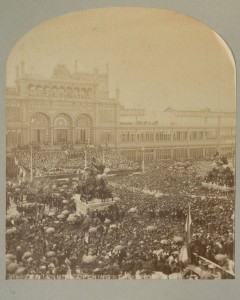
Modeled after the Crystal Palace Great Exhibition in London, and the first in a long line of major world’s fairs in the United States, the Centennial Exhibition in 1876 exhibited national pride and belief in the importance of education and progress through industrial ...
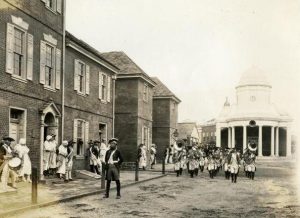
During the late nineteenth century, a time of great tension, new immigration, and accelerating industrialization, white Euro-Americans sought comfort in the past, specifically the Colonial and Revolutionary eras. In their romanticized interpretation, the founding era was defined by simplicity, domestic industry, and unity—qualities in direct contrast to the tumultuous Civil War and its ...
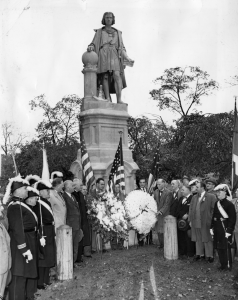
Observed on the second Monday in October, Columbus Day in the Philadelphia region gained prominence as Italian immigrant communities grew in the late nineteenth and early twentieth century. By commemorating the 1492 arrival of Christopher Columbus (1451-1506) in the New World, Italian-Americans embraced the navigator as their countryman, celebrated Italian culture, and called attention to their ...
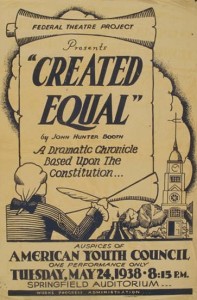
As a cause for commemoration, the signing of the U.S. Constitution historically has struggled to compete with the Declaration of Independence for national recognition and ardor. In Philadelphia, the site of the Constitutional Convention, commemoration of the document’s major anniversaries has reflected how regard for the Constitution and its connections to the city have evolved over ...
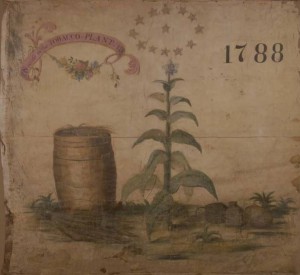
Three hours long and a mile-and-a-half in length, the Grand Federal Procession was an ambitious act of political street theater, scripted by federalist supporters of the newly ratified U.S. Constitution and performed in the streets of Philadelphia on the Fourth of July, 1788. From its commencement at Third and South Streets to its conclusion on Bush Hill north of the city center, the procession ...
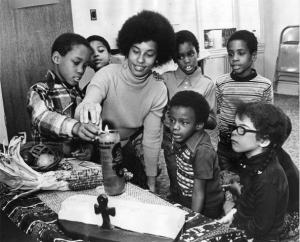
Because of its large African American population and the presence and influence of prominent Black Nationalist individuals and organizations, the Philadelphia area has been especially active in celebrating Kwanzaa, an African cultural holiday that emerged out of the Black Nationalist Movement of the ...

Labor Day, celebrated the first Monday of September, has been observed in the Philadelphia region since the 1880s, before it became a nationwide holiday. New Jersey was one of the first states to grant Labor Day legal status in 1887, and Pennsylvania followed suit by the end of the decade. The earliest incarnations of Labor Day grew from unrest among industrial laborers, but over time the holiday ...
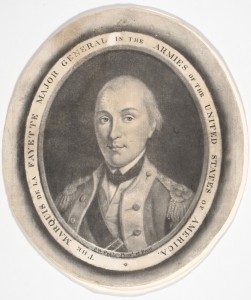
When the Marquis de Lafayette (1757-1834), a French hero of the American Revolution, returned to the United States in 1824-25, Philadelphians joined in a wave of nationwide affection for the nobleman who had volunteered for service in the Continental Army at the age of 19. Lafayette’s return to the region stirred increasing regard for preserving relics of the Revolution, especially the old ...
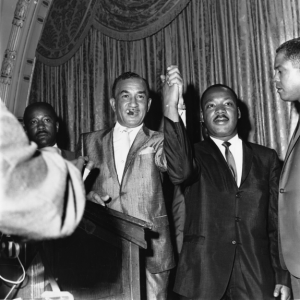
Philadelphia has had a greater influence on Martin Luther King Jr. holiday traditions than any city other than King’s birthplace, Atlanta. Observed on the third Monday in January since 1986, the federal holiday commemorates King (1929-68) and his civil rights activism. Ceremonies at the Liberty Bell and a focus on community service are among Philadelphia’s contributions to the annual ...
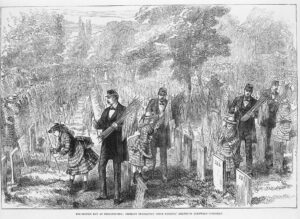
Memorial Day, the last Monday in May, has been observed in the Greater Philadelphia area since the 1860s. The springtime holiday is considered the United States’ first multiracial, multiethnic commemoration and the kickoff of the summertime season. However, Memorial Day’s meanings and origin stories have been debated since its creation, and the holiday’s roots have been both contested and ...

Monument to Six Million Jewish Martyrs, at Sixteenth and Arch Streets at the start of the Benjamin Franklin Parkway, is an 18-foot, 5-ton bronze sculpture by Nathan Rapoport (1911-1987). Dedicated on April 26, 1964, it was the first public monument memorializing victims of the Holocaust in North America and the only such monument in Philadelphia. In 2018, the surrounding triangular site, ...
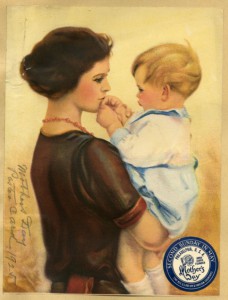
Honored in various capacities since the late nineteenth century, Mother’s Day has deep connections to religion, war, feminism, and consumerism. For over a century, the meaning and purpose of Mother’s Day has been used and contested to celebrate individual mothers, enfranchise women, boost congregation numbers, and sell goods, among other ...
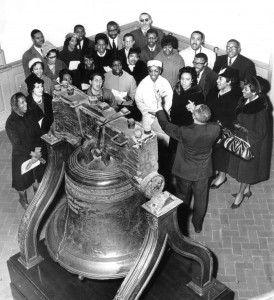
Created in 1942 by a Philadelphian born in slavery, the annual National Freedom Day commemoration each February 1 calls attention to the Thirteenth Amendment to the United States Constitution, which ended slavery, and the continuing struggle for African American justice and ...
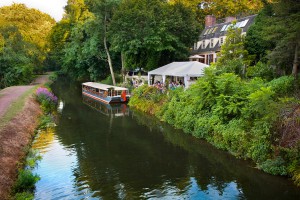
National parks figure prominently in Greater Philadelphia’s cultural, economic, and natural landscapes. Morristown (1933), Independence (1948), Valley Forge (1976), and First State (2015) National Historical Parks all preserve and provide access to sites associated with the American Revolution and early American history. Together they welcome nearly six million visitors each year and create ...
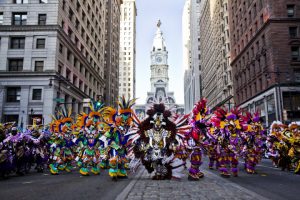
New Year's celebrations in the Philadelphia region have often included parties, formal wear, fireworks, and parades as part of a two-day, secular celebration from December 31 to January 1. The changing of a calendar year has long been cause for commemoration and reflection, and the city’s diverse communities have shaped the ...
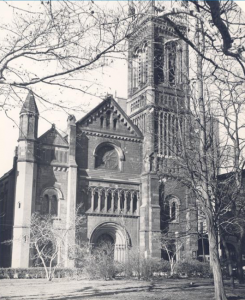
One of the best-known hymns of the Christmas season, “O Little Town of Bethlehem,” originated in 1868 as a poem written for the Sunday School of the Church of the Holy Trinity on Philadelphia’s Rittenhouse ...
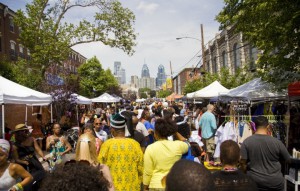
The ODUNDE Festival, held in South Philadelphia each year on the second Sunday in June, celebrates the history and heritage of African people around the globe and serves to instill and encourage cultural pride. Taking its name from the word meaning “Happy New Year” in the Yoruba language (placed in all capital letters by the festival founders for emphasis), the event celebrates the coming of ...
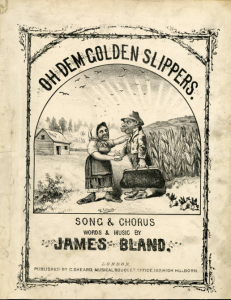
“Oh, Dem Golden Slippers,” the unofficial theme song of the Philadelphia Mummers Parade, is both an enduringly popular song and a revealing example of the complex, multilayered interplay between black and white music in ...
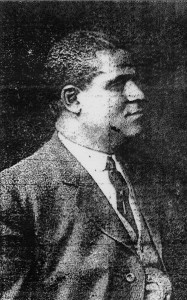
Held in 1913 in South Philadelphia, the Pennsylvania Emancipation Exposition marked the fiftieth anniversary of the Emancipation Proclamation with events and exhibits celebrating African American progress. At a time when the African American population in Philadelphia was growing and gaining in political influence, the event’s organizers also experienced a backlash of criticism as they secured ...

On July 4, 1965, thirty-nine individuals gathered outside Independence Hall to picket for homosexual rights. This event, one of the earliest organized homosexual rights demonstrations in the United States, sought to remind the public that basic rights of citizenship were being denied to homosexual individuals. Reprised each year through 1969, the year of the Stonewall ...
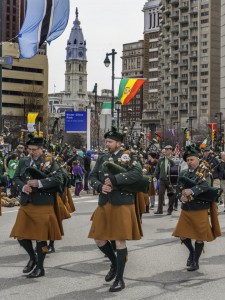
Once a religious holiday and a political parade, Saint Patrick’s Day transformed over two centuries into a largely secular celebration reflecting the changing culture of Philadelphia’s Irish population and of the city at ...
Family names and place names were almost the only names one needed to know when America was composed of small, homogeneous communities. Often interchangeable, such markers signified social and cultural status. But they ceased to be sufficient when America became more diverse and the family less communal. An institution like the school needed a name of its own, and over time the people of eastern ...

In 1926, Philadelphia hosted the Sesquicentennial International Exposition, a world’s fair, to commemorate the one hundred and fiftieth anniversary of the signing of the Declaration of Independence. Although it opened to great fanfare, the exposition failed to attract enough visitors to cover its ...
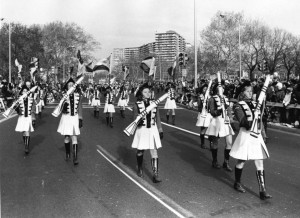
Although inspired by a 1621 feast shared by Pilgrims and Native Americans in Plymouth, Massachusetts, Thanksgiving traditions emerged from more than two centuries of celebrations influenced by social classes, ethnic groups, and the rise of consumer culture. Some of the most popular practices of Thanksgiving by the twenty-first century originated in ...
Connecting the Past with the Present, Building Community, Creating a Legacy